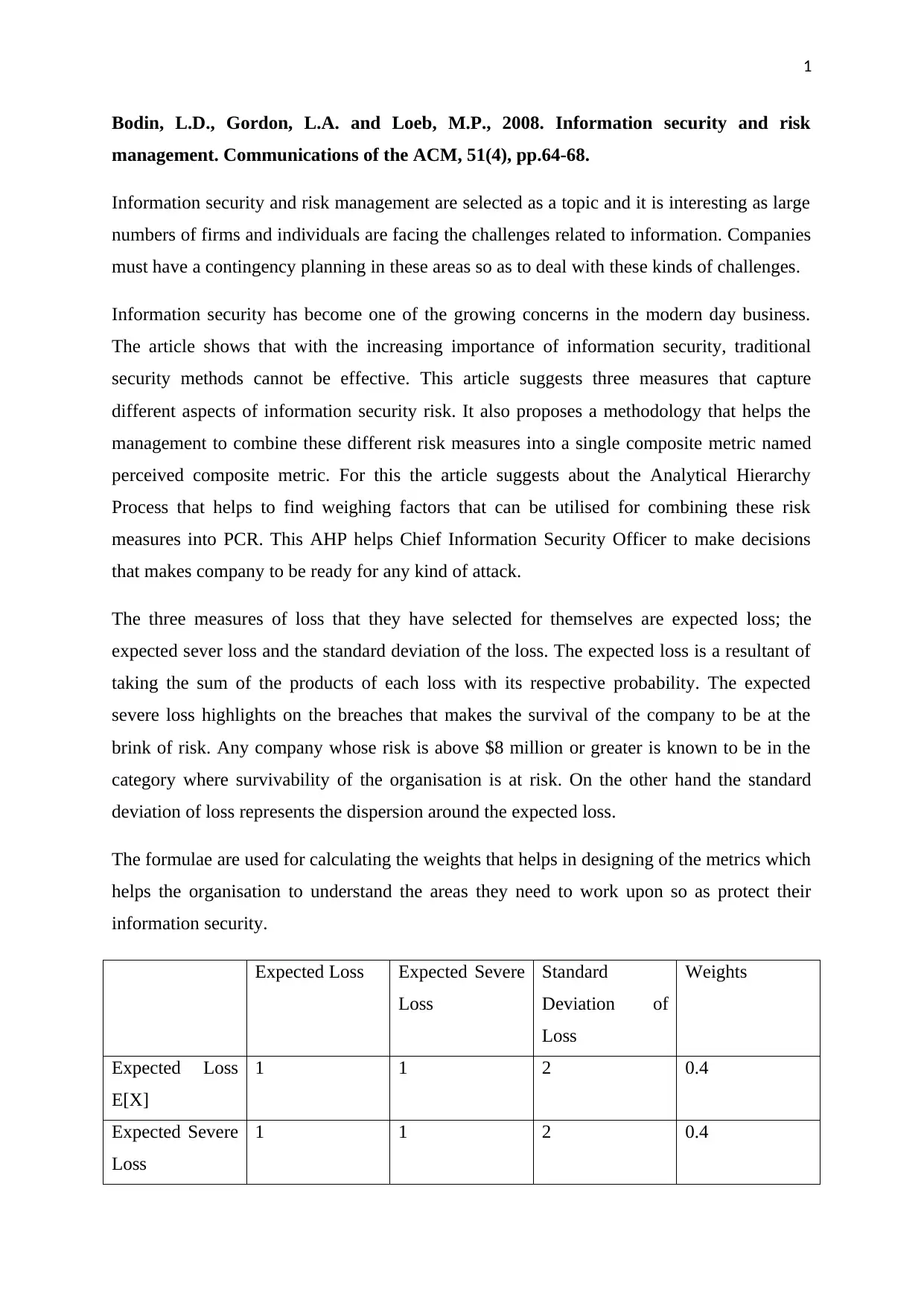A Comprehensive Report on Business Continuity and Disaster Recovery
VerifiedAdded on 2023/04/19
|4
|625
|318
Report
AI Summary
This report delves into the critical aspects of business continuity and disaster recovery planning, drawing upon resources like 'Information security and risk management' to highlight the increasing importance of robust security measures in modern businesses. It emphasizes the need for contingency planning to address information security challenges, especially as traditional methods become less effective. The report also discusses measures for assessing information security risk, such as expected loss, expected severe loss, and standard deviation of loss, using the Analytical Hierarchy Process (AHP) to combine these measures into a composite metric. Furthermore, it examines incident response planning, including the development of incident response policies, the formation of security incident response teams, and the creation of incident response plans, all aimed at preparing organizations for unexpected events and ensuring business continuity in the face of potential disruptions.
1 out of 4






![[object Object]](/_next/static/media/star-bottom.7253800d.svg)